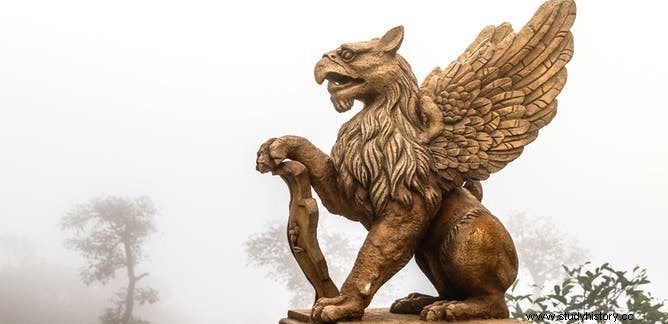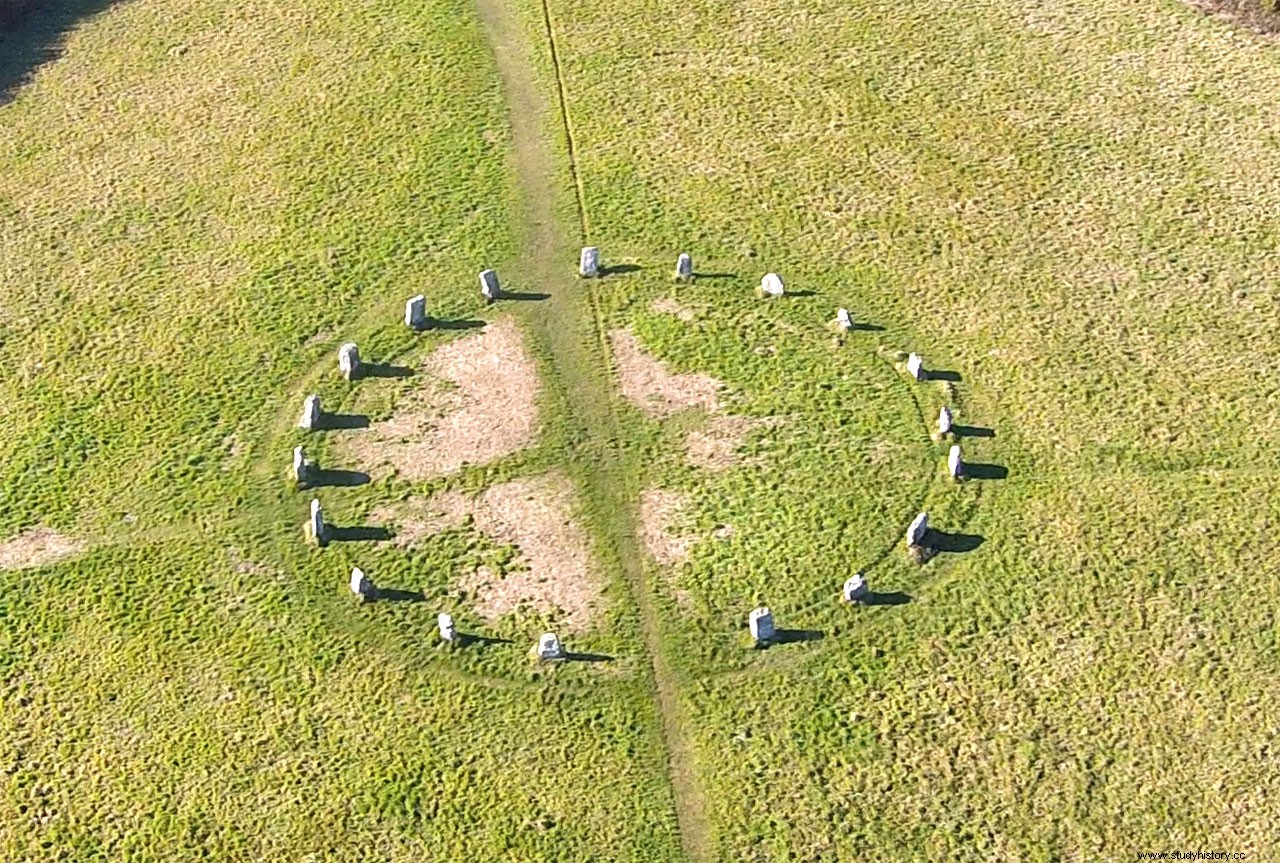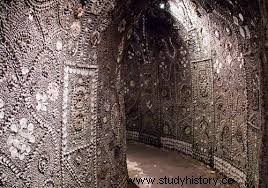Every country, whether it is a democracy or a monarchy, has its own mysteries and myths that make up its history and culture.
Britain has its own refined culture that is unlike any other. Based on the legend, history is part of the culture and what made it the country it is today.
Not only is the monarchy historical, but its historical sites contain legends, myths and mysteries such as inspired novels, films and television.
Legend Vs. Myth vs. Mystery
There is often confusion between the three concepts.
Sometimes they overlap, and through a series of events, one becomes part of the other.
On their own, they provide different interpretations of past and present.
The problem is to distinguish one from the other without the true historical facts.
Legend
A legend is a bit of a historical fact. It mentions people and real events.
However, these historical facts are exaggerated to where real people or events are glamorized.
Therefore, the historical facts become a legend.
Myth
A myth is a symbolic story that is never based on facts.
It involves a belief based on a fact or an experience phenomenon.
As a result, a myth depicts a sacred narrative based on a god, hero, or the origin of the world and people.
Mystery
In this context, a mystery is a historical aspect that can not be explained, and at times kept secret.
It remains unknown until proven.
Great Britain (Great Britain) has a unique story filled with legends, myths and mysteries yet to be solved.
Although not much is known about many of the sites, they are still part of the history of the early British.
Avebury Stone Circles

In addition to their strong ancestry, stone circles are part of Britain's greatest mysteries.
Location:Avebury, Wiltshire, South West England.
This architectural marvel is located in Avebury Village.
Made of our sarsen stone, it is a large outer stone circle that contains two smaller inner circles.
The stone circles originate from prehistoric Britain, during the Neolithic.
During this time they used stone tools. There is evidence of the emergence of metallurgy and ceramics.
The strange thing is that there is no evidence to say how early the British moved the heavy stones (40 tons / 36 287 kg) and placed them. There was no technology of any kind.
It continues to be a mystery, from historians and archaeologists to local villagers and tourists, about how Neolithic Britons took each stone and pushed it up.
In addition, no one knows the true purpose of the stone circles.
Theories of Myths and Mysteries
Since its discovery, archaeologists and historians have not found any written records related to the purpose or construction of the stone circles.
As a result, without information or evidence, all possible theories are just that. There is nothing to give a concrete claim.
Archaeologists and historians have put forward many theories that remain as either myth or mystery.
The stone circles were a peace offering to the gods who controlled the climate, among other natural resources. This peace sacrifice asked the gods for protection against harmful diseases and disasters.
As times changed, the stones still retained their religious significance.
In the Middle Ages, the stones may have been used for pagan and devil worship.
Based on finds of animal bones around the area, the place could have been for parties and gatherings.
Unfortunately, as time went on, civilizations destroyed some of the rocks. This changed the landscape for agricultural development and building construction.
It was originally 100 stones that made up the outer ring.
Now there are only 29 to 30 left.
During excavations, archaeologists found the skeleton of a hairdressing surgeon smashed under a rock.
They theorized that those who wanted to remove the pagan stones from sight buried the deceased under.
Alexander Keiller
Archaeologist Alexander Keiler, heir to the Dundee marmalade business, bought the land around Avebury's Neolithic and Bronze Age sites.
This was maintained and preserved by the stone circles.
Between the 1920s and 1930s, he built a mansion in the area.
Several years later, the property was transferred to the National Trust and became a museum.
It continues to house the artifacts excavated around Avebury.
Glastonbury Abbey

Location:Glastobury, Somerset, England, UK.
This is one of the most important historical monasteries in Britain.
For almost 2000 years it has been a place of myths and legends.
The history of the place dates back to the first century.
In 712, the Saxon king Ine of Wessex constructed the original stone church of the monastery.
The Myth and Mystery of Joseph of Arimathea
Joseph of Arimathea was a prosperous follower of Jesus Christ, as well as his great-uncle.
He buried Christ in his own tomb after the crucifixion.
In the Middle Ages, Joseph was the guardian of the Holy Grail.
He received the Grail from a revelation of Jesus and sent it with his followers to Britain.
The Arthurian legends elaborate on the story.
Instead of followers of Christ, Joseph himself came to Britain with the Grail.
He buried it under the Glastonbury Gate (a hill near Glastonbury) at the entrance to the Underworld.
The foundation of the monastery set by Joseph is of great importance.
Its claim is that not only the abbey, but Glastonburry, is the oldest religious community and abbey in Britain
The myth of Arthur and Avalon
King Arthur lived during the 5th and 6th centuries, the Dark Ages or the post-Roman period.
To this day, some historians doubt the existence of Arthur.
Others see him as a warrior king who led the British towards the Anglo-Saxon conquest of England.
In 1184 a great fire destroyed most of the monastery, including the old church.
Funded reconstruction began immediately, supported by King Henry II.
After the king's death, however, the financing ceased.
Two years later, the Glastonburry monks announced the discovery of the remains of King Arthur and his queen, Guinevere.
The requirement helped to withdraw funding.
The church was completed in the 13th century.
Arthur and Guinea's bones were reburied in a religious ceremony. King Edward I and Queen Eleanor attended the ceremony.
Halliggye Fogou

Location:Cornwall, England
'Fogou' is derived from the Cornish word ogo , which means "cave".
A well-preserved underground tunnel dating to the Iron Age.
Historians believe that construction began in the 4th and 5th centuries.
Little is known about the purpose of these underground chambers.
It is possible that they were used as storage chambers, since they remained cool during the warmer days.
They may also have been hiding places to escape an attack or for refugees or a sanctuary.
The majority of the fog detected is believed to have been places for ceremonies and rituals.
However, compared to the remaining 12-inch Cornwall, Halliggye stands out due to its incredible size and state of conservation.
Myths about Halliggye Fogou
One of the myths surrounds the entrance. It is in line with either the sunset or the rising sun.
This elaborates on the fogou used for ritual purposes.
Another is that when one enters the underground passages, it is like going back to the womb.
Long Me and Her Daughters

Location:North of Penrith in Cumbria, North West England.
This is the second largest stone circle in the UK
Long Meg is the highest of 69 rocks, with a height of 12 feet.
Engraved in the stone are three mysterious symbols. The four corners face the points of the compass.
Also, it stands about 60 feet outside the circle.
Mythical and Mystical Theories
One of the most famous myths is the legend of a local witch and her daughters.
They danced wildly on the Sabbath night, on the bog, near a Scottish wizard.
The sorcerer saw this as a disrespectful act and turned the witch and her daughters to stone.
Another myth states that they were not the witch's daughters, but her lovers.
They experienced the same fate, turned to stone, because of their involvement with the witch.
The Legend of the Witch
Stories say that the circle still contains some of the magic left over from the wizard's sorcery.
That makes the stones innumerable.
In other words, it is impossible to count the same number of stones twice.
If you do, the spell will be broken and one of two things will happen afterwards.
It will free the witch and her staff trapped in stone, or the person who managed to count them correctly twice will have incredible bad luck.
A third legend says that if you walk around the circle, count the stones correctly and then put your ear to Long Meg, you will hear her whisper.
The happy virgins

Location:South of St Buryan Village, Cornwall, United Kingdom.
These are 19 stones arranged in a perfect diameter of 24m.
Each rock is 3-4 meters apart, which is common in almost all British rock circles.
The stones, carefully selected and placed, gradually decrease in size from southwest to northeast. It is believed that this should reflect the lunar cycle.
The name, given in the 19th century, is derived from the Cornish expression Dans Meyn , which means dancing stone.
Dan Meyn can also be changed from Zans Meyn , 'sacred stone'.
A Victorian myth
The story is about 19 girls, a fiddler and two pipers.
The girls were out on a field at night dancing while the musicians played their instruments.
Despite how innocent this may sound, the group lost track of time and danced into the Sabbath.
This greatly displeased God. He turned the local girls to stone while dancing in a circle, a warning to others.
As for the fiddler and the pipes, they heard the bells in the nearby church when it struck midnight.
They realized that they had broken religious rules and ran away and let the girls dance.
A myth that left a moral, God saw their cowardly escape. As he did so, he turned them to stone and left them some distance away from the virgins.
The shell cave of Margate

Location:Margate, Kent, South East England.
The cave is hidden under the English city of Margate.
4.6 million shells cover the entire cave in symmetrically balanced and geometric work. It edges walls, ceilings, an altar and a dome that opens to the sky.
No one knows who, when or the reason behind the construction of the cave.
The shells vary in size and type, forming an elaborate, intricate mosaic of decorative patterns and geometric shapes.
Throughout the cave, the symbols appear to be of a pagan nature. They symbolize life, death, fertility, femininity and love.
The whole construction is believed to show a fusion between heaven and earth.
A single horizontal line runs through the cave. Historians believe that below the line represents the earth and the line represents the sky.
A panel, called 'The Womb', has no line. This area is believed to be where heaven and earth merge.
In addition, a major theme in the cave is the power of women.
This leads to the conclusion that women designed and built the Shell Cave.
The myths about Tintagel Castle

Location:Village of Tintagel, North Cornwall, United Kingdom.
Tintagel Castle was built between the 5th and 7th centuries and is an important stronghold. It was also, most likely, the residence of the rulers of Cornwall.
In the Middle Ages, people all over Britain were obsessed with the stories of King Arther and his knights of the Round Table.
They believed that he was the most powerful of kings who shaped Britain for the better.
To them, he was not just a legend.
Tourists visiting the ruins talk about its "magical feeling".
Geoofrey of Monmouth linked the ruins of Tintagel to the stories of King Arther in his Historia Regum Britannae ("History of the Kings of Britain").
This included that Tintagel was:
- the place of Arthur's conception and birth, with the help of Merlin.
- where an epic dual took place between Arthur and his archenemy, Mordred.
- of where Arther used Excalibur.
- where Arthur and his knights of the round table sat.
- The basis for battles with monsters and dragons.
- where the hunt for the Holy Grail began.
the conclusion

Mythology of all kinds influences and reflects societies and their cultures throughout history. In addition, they add a certain stability to a culture in their belief system.
All in all, it reflects how people, according to the same belief system, relate to each other in everyday life.
Britain is a country filled with people from different cultures and who follow different faiths.
However, Britain itself has its own legends, myths and mysteries that make up history. It inspires their written works, films and TV, and even works in other countries.
The true purpose of their sites has not yet been discovered.
Behind every myth lies a truth; beyond every legend is reality, as glorious (sometimes as frightening) as the story itself.
-Phyllis McGinely, author.
